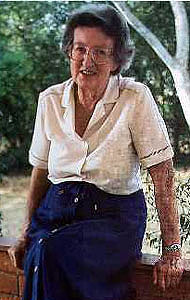

|
Assignment |
|
|
Course home
page
Assignment Background Mary Douglas Nicol was born on February 6, 1913. Her father, Erskine Nicol, was a landscape painter, and her mother, Cecilia Marion Frere, an amateur artist. Mary spent much of her early childhood in Europe, especially in the Dordogne, a region abundant in prehistoric cave art and archaeological sites. In 1930 she began auditing archaeology and geology courses at the University of London, working on archaeological digs and doing illustrations. In 1933, a close friend introduced her to the archaeologist Louis Leakey who was lecturing at the Royal Anthropological institute. Louis asked Mary to do the drawings for his book, Adam's Ancestors, and an affair began between the two. In 1935 she left England to join Louis in Tanzania. In the ensuing decades, Mary and Louis spent much of their time excavating at Olduvai Gorge in the Serengeti Plains of northern Tanzania. However, it was on Rusinga Island, just off the west bank of Lake Victoria, that the Leakeys made their first important discovery. In early October 1948, Mary discovered the skull and jaws of an apelike creature called Proconsul Africanus, the first skull of a fossil ape ever to be found and the first skull of a possible ancestor of humans and modern apes. This skull, eighteen-million-years-old from the Miocene era, was the oldest then discovered in Africa. In 1959, Mary found "Zinjanthropus" (Australopithecus Boisei), a hominid fossil about 1.75 million-years old. "Zinj" was the oldest hominid ever found to that time and the first of that species. The discovery led to even greater renown for the Leakeys, and in 1962, both Mary and Louis received the gold Hubbard Award from the National Geographic Society, the Society's highest honor. By the late 1960s, Mary and Louis were seldom together. On 1 October 1972 Louis died of a heart attack. After her husband's death, Mary continued her work at Olduvai and at nearby Laetoli. In 1976 her team uncovered fossilized animal prints, and two years later two short parallel trails of hominid footprints that stretched more than eighty feet in rock dating to 3.6-million-years-old. The prints were made by two individuals walking side-by-side, with a third deliberately stepping in the footprints of the largest individual. In 1983, Mary retired from active fieldwork and moved to Nairobi. She published her autobiography, Disclosing the Past, in 1984, and continued to work at various excavations in Kenya and at Olduvai until close to her death on 9 December 1996 at the age of eighty-three. Timeline
Websites
There is material on the web dealing with the entire (very interesting) Leakey family, such as: A Science Odyssey: People and Discoveries, The Leakey family; The Leakey Family; and the Leakey Foundation site. Also shedding light on the Leakey family is the interview with Richard Leakey (Mary Leakey's son), A Conversation with Donald Johanson and Richard Leakey. See also another conversation with Richard Leakey, Zinj and the Leakeys. There are useful biographies of Mary Leakey's husband, Louis Leakey (Emuseum and Talk.Origins), and son, Richard Leakey (Talk.Origins). See also the recent article by Meave Leakey (daughter-in-law of Mary Leakey), Finding Homo Sapiens' Lost Relatives (Continuing a Family Tradition, Meave G. Leakey Uncovers the Skeletons in Your Closet). To investigate the entire field of human origins, one might want to check some really good PBS programs including NOVA's In Search of Human Origins (part 1, part 2 and part 3) and and the new Human Evolution, A Science Odyssey. The Smithsonian Museum of Natural History Human Origins Program maintains an outstanding site that includes a representational human family tree. Another list of very useful websites links is maintained by Jeanne Sept (Indiana University). See also Early Hominin Evolution: A Survey of the Australopithecines and Related Genera by Dr. Dennis O'Neil. Finally, check the media-intensive site of the Institute of Human Origins, Becoming Human. Also, Hall of Human Origins at the American Museum of Natural History, the Institute of Human Origins at Arizona State University and 100 Years of the Leakey Family in East Africa. Books
Related Events |
This page is copyright © 2002, C.T.
Evans
For information contact cevans@nvcc.edu